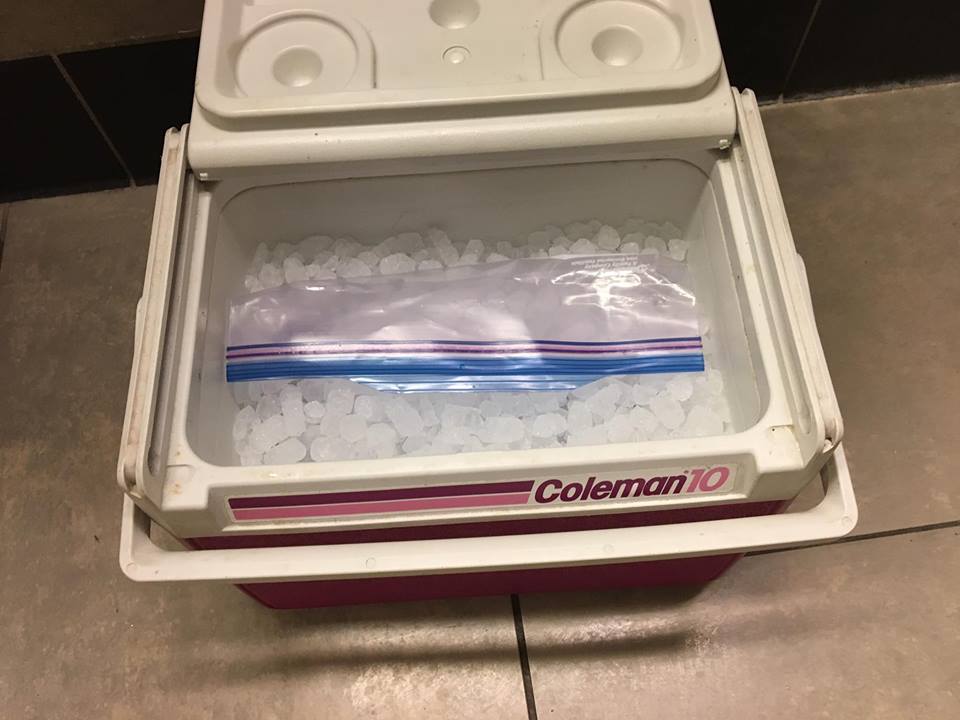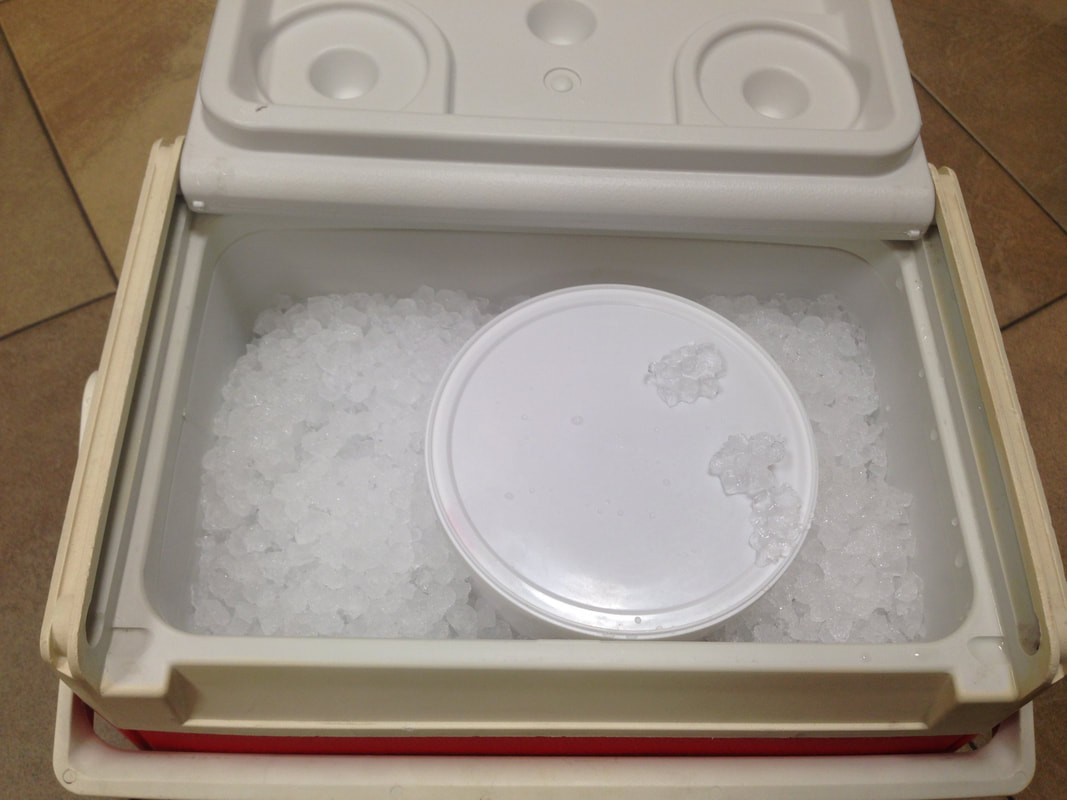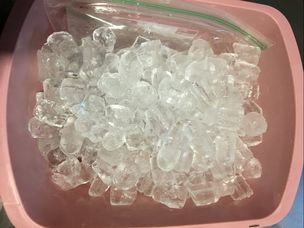by Anne Ferguson
It's a rite of passage for a new doula... having a placenta in your fridge! If you haven't done it yet you might need to... but in the meantime I want to share things you need to know to support your clients choosing placenta encapsulation.
It's actually not ideal for a doula to put a placenta in her home fridge. There is a possibility for contamination both for the doula's family and also for the client who the placenta belongs to. If it has to happen I recommend making sure the placenta is double bagged and then wrapped in a chux pad and maybe even another plastic bag to avoid leaks or spills. Then the doula should coordinate with the placenta encapsulator to get it out of the fridge as soon as possible.
It's a rite of passage for a new doula... having a placenta in your fridge! If you haven't done it yet you might need to... but in the meantime I want to share things you need to know to support your clients choosing placenta encapsulation.
It's actually not ideal for a doula to put a placenta in her home fridge. There is a possibility for contamination both for the doula's family and also for the client who the placenta belongs to. If it has to happen I recommend making sure the placenta is double bagged and then wrapped in a chux pad and maybe even another plastic bag to avoid leaks or spills. Then the doula should coordinate with the placenta encapsulator to get it out of the fridge as soon as possible.
Ideally, placentas should be stored in a cooler after birth (hard-sided preferred) with a ton of ice until the encapsulator can arrive. A couple hospitals (St. John's and Woodwinds as of this writing) actually have dedicated placenta fridges where placentas can be kept cold after birth. This is optimal! I encourage clients to bring two 1-gallon size ziploc baggies to double bag the placenta. These can then be placed in the cooler and surrounded completely by ice. This will keep the placenta safely cold. The partner/support person should check the ice every 2-3 hours until the placenta is picked up. Some hospitals have buckets. These work OK but the ice isn't completely surrounding the placenta when a bucket is used so it may not stay quite as cold. Here are some examples of what a well-preserved placenta looks like:
Doulas can support their clients by reminding them to bring their cooler and then helping get the placenta into a bucket or baggies and getting the ice. Placentas should be on ice within two hours of the birth. This means it's ok for it to be left out for the first hour that is so busy with cord cutting, placenta birthing, stitching if needed, clean-up and initial breastfeeding. Many providers will give a placenta tour during this time and that can be so fun as well! But before a doula leaves she should make sure the placenta has been put safely on ice. And of course when mom is about to push the placenta out the doula can remind the provider and nurses that mom is saving her placenta. It's so common these days that this shouldn't come as a surprise to anyone but reminders are helpful. This is especially important if it is a surgical birth since things may be a little more chaotic and every once in a while a placenta is lost in the shuffle.
Unfortunately there are nurses, doctors and even midwives at some local hospitals who are not supportive of encapsulation. They will tell patients that the placenta has to leave the hospital within two hours. I've written more about this topic and how to deal with it here. If you have this happen to one of your clients please use the strategies in that article to help problem solve. This happens often at Mercy, and occasionally at Abbott, Methodist, and St. Francis as of this writing. Doulas can help in this situation by taking the placenta home (in a cooler, on ice) until they can connect with the encapsulator. If you have no cooler and no way to get one, it is acceptable to keep the placenta cold in a plastic basin until you get home to put it in a fridge. This is tricky though as the ice will melt VERY quickly. You could double bag the placenta and surround it by ice in a basin (just ask the nurse for one) and then put the basin into a belongings bag or some other bag the nurse could provide. This picture shows what I mean however a lot more ice will be needed to keep it safely cold until you get home.
Unfortunately there are nurses, doctors and even midwives at some local hospitals who are not supportive of encapsulation. They will tell patients that the placenta has to leave the hospital within two hours. I've written more about this topic and how to deal with it here. If you have this happen to one of your clients please use the strategies in that article to help problem solve. This happens often at Mercy, and occasionally at Abbott, Methodist, and St. Francis as of this writing. Doulas can help in this situation by taking the placenta home (in a cooler, on ice) until they can connect with the encapsulator. If you have no cooler and no way to get one, it is acceptable to keep the placenta cold in a plastic basin until you get home to put it in a fridge. This is tricky though as the ice will melt VERY quickly. You could double bag the placenta and surround it by ice in a basin (just ask the nurse for one) and then put the basin into a belongings bag or some other bag the nurse could provide. This picture shows what I mean however a lot more ice will be needed to keep it safely cold until you get home.
Another way doulas can help is by helping let the encapsulator know that baby has arrived! My company's pickup hours are 8 am to 8 pm though other providers may have slightly different pickup hours. If you are supporting a client who gives birth during this time you can take it upon yourself to text the encapsulator and get the ball rolling on pickup. I personally don't request texts letting me know someone is in labor because birth is just so unpredictable. But occasionally that may be helpful, for example if it's close to 8 pm and the client is pushing and close to birthing. If the baby comes overnight then it's best to just help the client get the placenta into the cooler and remind them to contact their encapsulator based on whatever instructions they've received. Please do not text in the middle of the night unless it's an emergency!
Another thing to know is that fresh placentas are best kept cold but NOT frozen if they are going to be processed soon. Recently I had a client who kept her placenta and put it in the freezer because she wasn't sure if she was going to do encapsulation or not. Two days after the birth she decided she did want to. However, we needed 1-2 days to thaw out the placenta before processing. This caused a delay in when mom was able to start taking her capsules. It worked out just fine but is not ideal. The longest a placenta should stay in a fridge is four days. So if a client thinks they will do something with the placenta soon, it should stay in the fridge. However, it is a great idea to encourage clients who are unsure to take their placenta home and freeze it. If there is even a 1% chance they may want to encapsulate it or save it for some other reason they should!
To be a successful doula it's important to stay current on all the latest evidence about pregnancy, birth, postpartum, breastfeeding, etc. and that includes placenta encapsulation. It's also important to be aware of the latest controversies and what clients may be hearing from their friends, family, and care providers. There are two big controversies at the present time. One is whether is it safe to encapsulate if the mom is Group B strep positive. Please read this article to get yourself up to speed so you can help educate your clients and the care providers you interact with. This is one area where we do have *actual research* to back-up our claims that, when done safely and correctly, PE is SAFE.
As a doula it's important that you are referring clients to well-trained encapsulators who take this work very seriously. Unfortunately over the 7.5 years I've been encapsulating I have heard many scary things from other birth workers who offer this service but haven't been fully trained. Things like folks not using anywhere near enough bleach to sanitize their equipment (or any chemical strong enough to kill blood borne pathogens at all), people not wearing gloves, masks, and other personal protective equipment while working, and one person even calling me after she starting trying to grind up placenta pieces that were still wet and soft instead of dry and crispy. Yikes! Some encapsulators also dehydrate the "Raw" method at too low of a temperature which may not kill any bacteria that could be present and put moms at risk. The team I work with all have separate placenta kitchens in their home which means we aren't risking cross-contamination with our family's food. We have protocols that have been approved by my certifying organization, APPA and safety is our first concern. Help your clients find an encapsulator for whom this is a serious business, not something she does on the side once in a while. Someone on my team is almost always available so if you ever need someone last minute give us a call!
We don't really have good research on the effectiveness of placenta encapsulation yet. We have lots of anecdotal evidence and you can read about my clients' experiences here. We do have super limited evidence about what is in placenta capsules. Watch this video from Rebecca Dekker of Evidence Based Birth® to learn about that. The limited research (23 participants) showed that placenta capsules did contain more iron than the placebo (which was beef) but that did not affect mom's hemoglobin levels. How beef is a placebo is beyond me!! The research also showed that some hormones are in placenta capsules. The research did not look at if those hormones have an effect on the moms who ingest their placenta. It is my understanding that these studies which are mostly through UNLV are on-going and I look forward to future results.
The second controversy you hear about a lot is whether consuming placenta capsules will lower a mom's milk supply, Please read this article I wrote to get my take on that topic!
Thank you for taking the time to educate yourself on Placenta Encapsulation! Please follow my pages Bywater Birth and Minnesota Placenta on Facebook and stay in the loop as new research emerges.
Our websites:
www.bywaterbirth.com
www.minnesotaplacenta.com
Our number: 651-261-4738
Another thing to know is that fresh placentas are best kept cold but NOT frozen if they are going to be processed soon. Recently I had a client who kept her placenta and put it in the freezer because she wasn't sure if she was going to do encapsulation or not. Two days after the birth she decided she did want to. However, we needed 1-2 days to thaw out the placenta before processing. This caused a delay in when mom was able to start taking her capsules. It worked out just fine but is not ideal. The longest a placenta should stay in a fridge is four days. So if a client thinks they will do something with the placenta soon, it should stay in the fridge. However, it is a great idea to encourage clients who are unsure to take their placenta home and freeze it. If there is even a 1% chance they may want to encapsulate it or save it for some other reason they should!
To be a successful doula it's important to stay current on all the latest evidence about pregnancy, birth, postpartum, breastfeeding, etc. and that includes placenta encapsulation. It's also important to be aware of the latest controversies and what clients may be hearing from their friends, family, and care providers. There are two big controversies at the present time. One is whether is it safe to encapsulate if the mom is Group B strep positive. Please read this article to get yourself up to speed so you can help educate your clients and the care providers you interact with. This is one area where we do have *actual research* to back-up our claims that, when done safely and correctly, PE is SAFE.
As a doula it's important that you are referring clients to well-trained encapsulators who take this work very seriously. Unfortunately over the 7.5 years I've been encapsulating I have heard many scary things from other birth workers who offer this service but haven't been fully trained. Things like folks not using anywhere near enough bleach to sanitize their equipment (or any chemical strong enough to kill blood borne pathogens at all), people not wearing gloves, masks, and other personal protective equipment while working, and one person even calling me after she starting trying to grind up placenta pieces that were still wet and soft instead of dry and crispy. Yikes! Some encapsulators also dehydrate the "Raw" method at too low of a temperature which may not kill any bacteria that could be present and put moms at risk. The team I work with all have separate placenta kitchens in their home which means we aren't risking cross-contamination with our family's food. We have protocols that have been approved by my certifying organization, APPA and safety is our first concern. Help your clients find an encapsulator for whom this is a serious business, not something she does on the side once in a while. Someone on my team is almost always available so if you ever need someone last minute give us a call!
We don't really have good research on the effectiveness of placenta encapsulation yet. We have lots of anecdotal evidence and you can read about my clients' experiences here. We do have super limited evidence about what is in placenta capsules. Watch this video from Rebecca Dekker of Evidence Based Birth® to learn about that. The limited research (23 participants) showed that placenta capsules did contain more iron than the placebo (which was beef) but that did not affect mom's hemoglobin levels. How beef is a placebo is beyond me!! The research also showed that some hormones are in placenta capsules. The research did not look at if those hormones have an effect on the moms who ingest their placenta. It is my understanding that these studies which are mostly through UNLV are on-going and I look forward to future results.
The second controversy you hear about a lot is whether consuming placenta capsules will lower a mom's milk supply, Please read this article I wrote to get my take on that topic!
Thank you for taking the time to educate yourself on Placenta Encapsulation! Please follow my pages Bywater Birth and Minnesota Placenta on Facebook and stay in the loop as new research emerges.
Our websites:
www.bywaterbirth.com
www.minnesotaplacenta.com
Our number: 651-261-4738






















